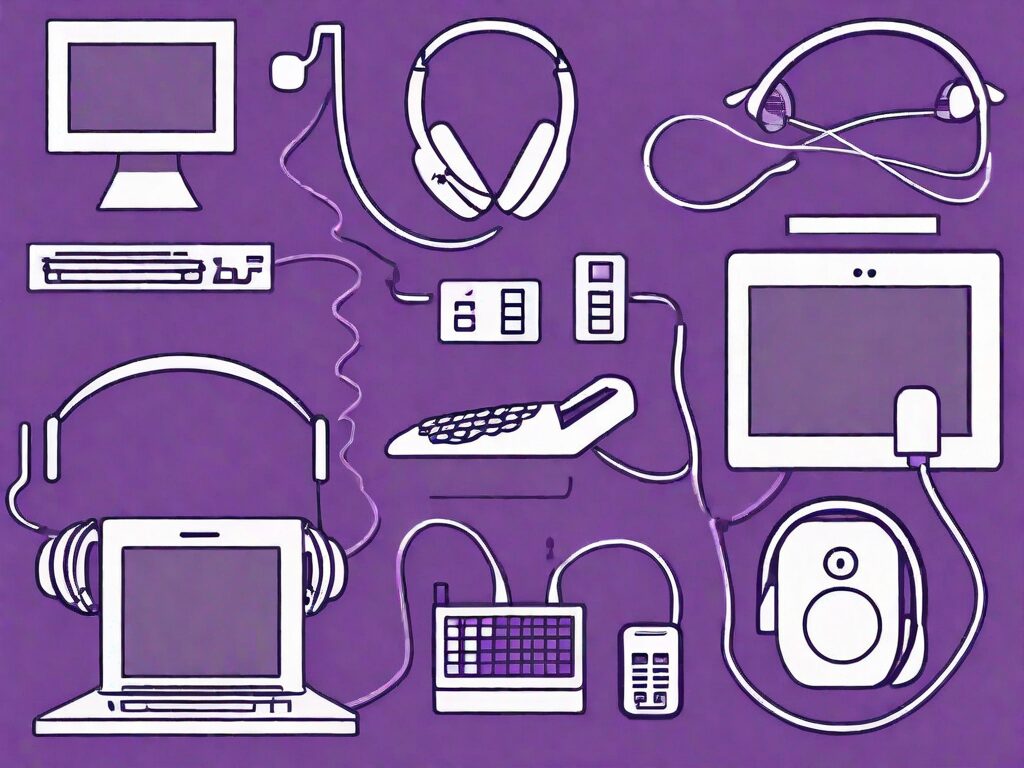Choosing the Right Customer Service Channel: Maximizing Budget and Meeting Customer Preferences
13 Oct 2023 By: Michael Kansky
Updated
Customer service is crucial for any business because it affects customer happiness and loyalty. With many ways to talk to customers online, picking the best one is tough. It needs a close look at the benefits and drawbacks of each, considering the budget, and knowing what customers like.

Customer Service Communication Channels: Phone, Chat, Email, SMS, and Social Media. Cons and Pros of each.
When it comes to customer service communication channels, there is no one-size-fits-all solution. Each channel has its own advantages and disadvantages, and understanding them is crucial for making an informed decision.
Phone
Phone support is a traditional customer service method. It offers real-time, personalized assistance. Customers can directly talk to a representative. This allows for quick problem-solving and adds a personal touch. The use of voice and non-verbal cues enhances the experience. However, it requires a lot of resources and can be expensive. This is especially true for businesses with many customers.
The post-COVID era has made phone support more challenging and expensive. Companies are dealing with more calls and fewer service representatives, increasing operational costs. Hiring, training, and keeping phone support staff, especially voice agents, costs a lot. Their rarity in the job market also makes hiring more competitive and expensive. Now, traditional in-house phone support, with its need for home offices, safety measures, and digital training due to the pandemic, adds even more to costs. Businesses might have to rethink their customer service approaches to adapt to these changes.
Chat
Meanwhile, chat support offers immediate help and saves money. It lets businesses manage many chats at once, which boosts efficiency and cuts down on wait times. This type of support is great for customers wanting fast answers without needing to talk directly. With the advent of ChatGPT and Generative AI, automating responses to common questions has become simpler. Yet, it misses the personal connection of phone support since it’s all through text.
Chat
Email is a favored channel for customer service, providing a documented exchange. It lets customers detail their problems and gives businesses a chance to respond thoughtfully. Ideal for complex issues or when a formal communication style is preferred, email support ensures thoroughness. Yet, it might be slower than other methods. This is because businesses often have to sort and manage many emails, affecting how quickly they can reply.
SMS
Text messaging offers fast and handy communication, ideal for sending urgent info like appointment reminders or updates on orders. SMS lets businesses connect with customers right on their phones, boosting engagement chances. However, it’s not the best for complex problems needing detailed discussions. Plus, some customers might look for more direct and instant ways to talk.
Social Media
Social media platforms give businesses a way to interact with customers openly, responding to feedback swiftly and showing transparency. This type of support helps reach more people and fosters brand loyalty by actively managing online communities. However, it demands specific resources and knowledge. Companies must keep an eye on various platforms, reply quickly, and keep their brand’s tone consistent. Also, public discussions on social media can intensify fast, needing skilled crisis management.
Knowing the strengths and weaknesses of each service channel helps businesses customize their service. Mixing channels can give customers a smooth, satisfying experience.
Evaluating Different Types of Customer Service Channels
After learning each channel’s pros and cons, decide which fits your business best. Think about your products, audience, and query complexity. This helps pick channels that match your needs.
Consider your product type when choosing service channels. Technical products may need live chat or phone support for real-time help and detailed answers.
For simpler products, email or self-service like FAQs work well. Email lets customers contact you anytime, and self-service lets them solve problems on their own. Use an SPF record checker to keep email safe.
If your customers are tech-savvy, consider social media or chatbots. These channels offer easy, familiar ways for them to get help.
However, if your target audience includes older customers not at ease with tech, phone or in-person support is best. These methods are personal and allow for clear explanations, making customers feel valued.
For complex queries, video tutorials or screen-sharing help a lot. They let your team show solutions visually, making it easier for customers to follow.
Lastly, it’s important to consider scalability and cost. Phone support needs more staff and resources for many inquiries. Self-service is cheaper and scales well, letting customers find answers without direct help.
In summary, choosing service channels means weighing your products, audience, inquiry complexity, scalability, and costs. This helps find the best fit for top-notch service.
Aligning Customer Service Channels with Your Budget
Great service can be budget-friendly. Consider AI chatbots for fast help without a large team. Outsourcing can also save money and keep quality up.
Determining Customer Preferences for Service Channels
Know what customers like to improve their experience. Use surveys, feedback, and metrics to find their favorite channels. Offering these can boost satisfaction and strengthen bonds.
Top 5 Strategies for Implementing the Right Service Channel
- Research and Analysis: Dive deep into research to grasp your target market and trends specific to your industry. This effort pinpoints the most suitable customer service channels for your company.
- Invest in Technology: Utilize cutting-edge customer service tools to make your operations smoother and more efficient. Using automation and data analysis can help handle large volumes of calls, scrutinize customer interactions, and spot improvement opportunities.
- Flexibility and Scalability: Opt for service channels that evolve with customer needs and scale with your business. Scalable options ensure your customer service keeps up with your company’s growth.
- Training and Empowerment: Offer detailed training for your customer service team. This prepares them to provide outstanding service through various communication methods.
- Continuous Improvement: Regularly review customer feedback and performance data to find improvement areas. Apply changes and assess their effect on customer satisfaction and operational efficiency.
Trending Now
WhatsApp is changing how customers engage in South America by evolving into a vital customer experience channel. In 2022, Meta announced that users in Brazil can now find, message, and buy from businesses on WhatsApp. This makes shopping simpler for its 200 million users. Meta also removed the need for a Facebook account, making access easier. This could change digital customer service globally, making WhatsApp a major player like China’s WeChat, blending shopping, messaging, and payments into one smooth experience.
Optimizing Customer Satisfaction Through Preferred Service Channels
Matching service channels with customer likes boosts satisfaction. Make sure customers can easily use their chosen channels. Aim for quick, personal support, fewer wait times, and faster responses to questions.
Benefit of Multi-Channel Customer Service Strategy
A multi-channel service strategy helps meet various customer needs, improving access and convenience. It can shorten response times and better the customer experience. This approach also widens reach and strengthens brand reputation.
Case Study: Successful Implementation of Right Customer Service Channel
Copart matched their service channel to what their audience likes, choosing live chat. This cut down response times and boosted satisfaction. They also used chat analytics to refine their support and spot trends.
Avoiding Common Mistakes When Choosing a Customer Service Channel
When choosing a customer service channel, it is essential to avoid common mistakes. These include:
- Not considering customer preferences and relying solely on cost factors.
- Overlooking the importance of flexibility and scalability.
- Not investing in proper training for customer service representatives.
- Ignoring customer feedback and failing to make necessary improvements.
- Implementing too many channels without adequate resources to manage them effectively.
By avoiding these mistakes, businesses can make more informed decisions and choose the right customer service channel for their unique needs.
Obtaining Feedback: Ensuring Your Chosen Service Channel Works
Feedback is essential for constant improvement in your customer service channel. Set up ways to collect feedback from customers and track their satisfaction. Consistently examine the feedback to spot areas needing improvement. Show customers you value their input by making changes based on their recommendations.
Conclusion
In conclusion, selecting the ideal customer service channel involves thoughtful analysis of different elements. Weighing the advantages and disadvantages, matching channels with financial plans, knowing what customers want, and applying efficient methods can boost customer happiness, loyalty, and, in the end, profit.
Ready to elevate your customer service with the right support channel? Look no further than HelpSquad BPO. Our dedicated virtual assistants and 24/7 customer service team are here to provide exceptional support, streamline your back-office operations, and conduct thorough research—all at a competitive rate starting at just $8.50 per hour. Don’t miss out on the opportunity to enhance your customer satisfaction and drive business growth. Start your trial today and experience the HelpSquad difference!


